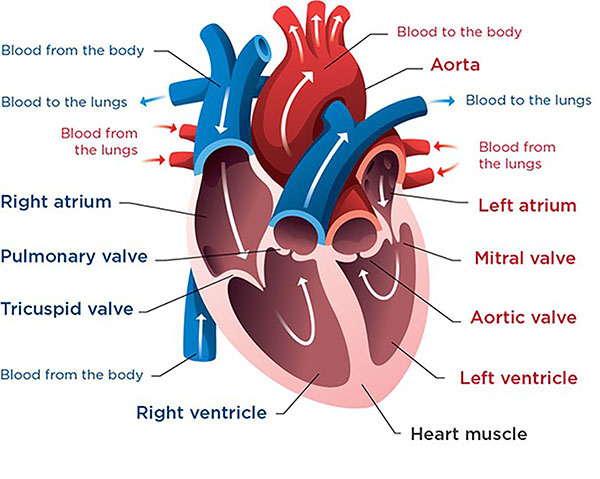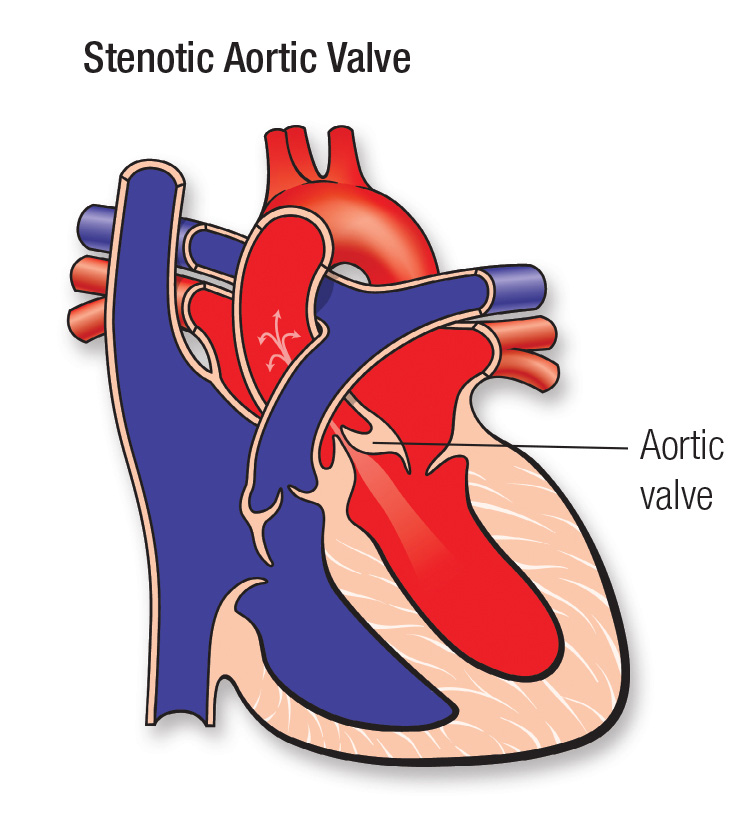Aortic Stenosis
-
Schedule an appointment with the Heart Center
- For appointments in Seattle, Everett, Bellevue, Federal Way and Olympia, call 206-987-2515.
- For appointments in Tri-Cities, call 509-375-9050.
- For appointments in Wenatchee, call 206-987-2515.
- For appointments in Tacoma and Silverdale, call 253-272-1812.
- For appointments in Alaska, call 907-339-1945.
- For appointments in Montana, call 406-771-3223.
- How to schedule
If this is a medical emergency, call 911.
-
Find a doctor
-
Locations
- Seattle Children's hospital campus: 206-987-2515
- Bellevue Clinic and Surgery Center: 425-454-4644
- Everett: 425-783-6200
- Federal Way: 253-838-5878
- Olympia: 360-459-5009
- South Sound Cardiology Clinics: 253-272-1812
- Tri-Cities (Kennewick): 509-582-1700
- Wenatchee: 509-662-9266
- Pediatric Cardiology of Alaska: 907-339-1945
- Pediatric Cardiology of Montana: 406-771-3223
- Seattle Children's doctors provide many cardiac services at regional sites throughout the Pacific Northwest. See our complete list of Heart Center locations.
-
Refer a patient
- If you are a provider, fax a New Appointment Request Form (NARF) (PDF) (DOC) to 206-985-3121 or 866-985-3121 (toll-free).
- No pre-referral work-up is required for most conditions. If you have already done testing such as an EKG, Holter monitor or echocardiogram, please fax this information as well as relevant clinic notes and the NARF to 206-985-3121 or 866-985-3121 (toll-free).
- Your patient will be seen as quickly as possible by the provider who is the best match for managing the current problem.
- View our complete Heart Center referral information.
What is aortic stenosis?
Aortic stenosis (a-OR-tik sten-OH-sis) is the narrowing or blocking of the heart’s aorta. The aorta is the artery that carries red (oxygen-rich) blood from the heart to other parts of the body.
Stenosis can happen above or below the aortic valve, or the valve itself may be narrowed.
If the aorta or valve is narrowed, the left ventricle has to pump harder to push blood through it. To do the extra work, the muscle wall of the ventricle gets thicker.

This is a normal heart. In aortic stenosis, the aorta or the aortic valve is narrowed or blocked.
 From heart.org. ©2009, American Heart Association, Inc.
From heart.org. ©2009, American Heart Association, Inc.
What causes aortic stenosis?
About 4 in 1,000 babies are born with aortic stenosis. In some children it develops after birth. The causes aren’t completely clear. Sometimes, it is caused by rheumatic fever, which can happen after an infection with Streptococcus bacteria.
Aortic Stenosis at Seattle Children’s
-
The experts you need are here
- The Heart Center team includes more than 40 pediatric cardiologists who diagnose and treat every kind of heart problem. We have treated many children with aortic stenosis.
- Our doctors and surgeons are experts in the treatments your child may need, including cardiac catheterization or surgery.
- We also have a pediatric cardiac anesthesia team and Cardiac Intensive Care Unit for children who need them. General anesthesia is a medicine we give to people before surgery so they are fully asleep during the procedure.
- Your child’s team includes other experts from Seattle Children’s based on their needs, like neonatologists and pulmonologists.
-
Care from before birth through young adulthood
- If your developing baby is diagnosed with aortic stenosis before birth, Seattle Children’s Fetal Care and Treatment Center team works closely with you and your family to plan and prepare for any care your baby may need.
- Your child’s treatment plan is custom-made. We plan and carry out their treatment based on the specific details of their heart condition. We closely check your child’s needs to make sure they get the care that is right for them at every age.
- We have a special Adult Congenital Heart Disease Program to meet your child’s long-term healthcare needs. This program, shared with the University of Washington, transitions your child to adult care when they are ready.
-
Support for your whole family
- We are committed to your child’s overall health and well-being and to helping your child live a full and active life.
- Whatever types of care your child needs, we will help your family through this experience. We will discuss your child’s condition and treatment options in ways you understand and involve you in every decision.
- Our Child Life specialists know how to help children understand their illnesses and treatments in ways that make sense for their age.
- Seattle Children’s has many resources, from financial to spiritual, to support your child and your family and make your experience as smooth as possible.
- Many children and families travel to Seattle Children’s for heart surgery or other care. We help you coordinate travel and housing so you can stay focused on your child.
- Read more about the supportive care we offer.
What are the symptoms of aortic stenosis?
-
Symptoms of aortic stenosis in children
Most children with aortic stenosis do not have any symptoms. They may have no noticeable problems unless the stenosis gets worse.
If children do have symptoms, they may include:
- Feeling short of breath when active
- Having pain, pressure or tightness in their chest
- Fainting or feeling weak or dizzy when active
- Having palpitations
-
Symptoms of aortic stenosis in babies
Babies born with severe aortic stenosis may have these symptoms:
- Working hard to breathe
- Poor appetite or trouble feeding
- Poor weight gain or slow growth (failure to thrive)
They may also show signs of shock because their heart cannot pump enough blood to the rest of their body (cardiogenic shock). Signs include:
- Fussiness
- Poor feeding
- Rapid breathing
- Lack of energy (lethargy)
- Less frequent peeing
- Increased heart rate
- Mottled skin
How is aortic stenosis diagnosed?
-
Fetal diagnosis of aortic stenosis
If a baby in the womb has aortic stenosis, doctors may be able to diagnose it using a fetal echocardiogram (fetal echo). This is a special ultrasound that uses sound waves to view and make pictures of a developing baby’s heart during pregnancy. The results are interpreted by a pediatric heart doctor (cardiologist) who specializes in fetal congenital heart disease.
Your obstetrician may refer you for a fetal echo if your family has a history of congenital heart disease or if a routine prenatal ultrasound shows a problem.
Seattle Children’s Fetal Care and Treatment Center team can care for you when you are pregnant if your developing baby has a known or suspected problem.
-
Diagnosing aortic stenosis after birth
To diagnose this condition, your child’s doctor will examine your child, use a stethoscope to listen to their heart and check their blood pressure. Sometimes, doctors find aortic stenosis after hearing a heart murmur in a child who appears well.
The doctor will ask for details about any symptoms your child has, their health history and your family health history.
If your child has aortic stenosis, they will need an echocardiogram to check the stenosis and to see how their heart works.
Your child may need other tests that provide more information about their heart. These include:
- ECG or EKG (electrocardiogram)
- Chest X-rays
- MRI (magnetic resonance imaging) of the heart
- Cardiac catheterization
How is aortic stenosis treated?
Not all children with aortic stenosis need treatment to fix their aorta or valve. It depends on how severe their condition is. But all children with aortic stenosis need lifelong care to check their condition in case it gets worse.
Some children with aortic stenosis need treatment right away because their heart cannot send enough blood and oxygen to the rest of their body.
Balloon procedure
Treatment may be done in the cardiac catheterization lab using a balloon procedure. Doctors insert a balloon across the valve and inflate it to stretch the valve open. Then they remove the balloon. This is called balloon valvuloplasty.
Surgery
Some children need surgery to replace their aortic valve with an artificial valve. In some cases, surgeons can use the child’s own pulmonary valve to replace the damaged aortic valve. Sometimes surgeons can repair the valve without needing to replace it.
Contact Us
Contact the Heart Center at 206-987-2515 for an appointment, second opinion or more information.
Providers, see how to refer a patient.
Related Links
- See a picture (American Heart Association)
- Cardiac Catheterization Procedures
- Heart Center
- Heart Surgery
- What to Expect
Paying for Care
Learn about paying for care at Seattle Children’s, including insurance coverage, billing and financial assistance.
For Healthcare Professionals
-
Schedule an appointment with the Heart Center
- For appointments in Seattle, Everett, Bellevue, Federal Way and Olympia, call 206-987-2515.
- For appointments in Tri-Cities, call 509-375-9050.
- For appointments in Wenatchee, call 206-987-2515.
- For appointments in Tacoma and Silverdale, call 253-272-1812.
- For appointments in Alaska, call 907-339-1945.
- For appointments in Montana, call 406-771-3223.
- How to schedule
If this is a medical emergency, call 911.
-
Find a doctor
-
Locations
- Seattle Children's hospital campus: 206-987-2515
- Bellevue Clinic and Surgery Center: 425-454-4644
- Everett: 425-783-6200
- Federal Way: 253-838-5878
- Olympia: 360-459-5009
- South Sound Cardiology Clinics: 253-272-1812
- Tri-Cities (Kennewick): 509-582-1700
- Wenatchee: 509-662-9266
- Pediatric Cardiology of Alaska: 907-339-1945
- Pediatric Cardiology of Montana: 406-771-3223
- Seattle Children's doctors provide many cardiac services at regional sites throughout the Pacific Northwest. See our complete list of Heart Center locations.
-
Refer a patient
- If you are a provider, fax a New Appointment Request Form (NARF) (PDF) (DOC) to 206-985-3121 or 866-985-3121 (toll-free).
- No pre-referral work-up is required for most conditions. If you have already done testing such as an EKG, Holter monitor or echocardiogram, please fax this information as well as relevant clinic notes and the NARF to 206-985-3121 or 866-985-3121 (toll-free).
- Your patient will be seen as quickly as possible by the provider who is the best match for managing the current problem.
- View our complete Heart Center referral information.